
Difficulty
Beginner
Duration
Under 2 hours
As your gutters start to age, they may start sagging, overflowing, leaking or pooling runoff. If left untreated, these gutter problems could cause damage to the windows, home exterior or foundation. More often than not, a leaky gutter is a result of a faulty joint between sections or a hole in the gutter itself. Learning how to fix a leaky gutter is an easy, inexpensive project you can do yourself. Even if the metal gutter parts have rusted through, fixing gutters is quite simple.
This guide explains how to fix gutter leaks, specifically when repairing a small or large hole in metal gutters. It will also outline other common problems of gutter systems and how to look for those items as you repair your leaky gutter.
Clean the Area Around the Leak

- First, locate where your leak is coming from. Most common leaks tend to occur at seams and end caps.
- Clean the area around the leak with a wire brush and water.
- After the area has dried, scrub it with an abrasive pad. Roughing up the surface a little bit will help provide some texture for the roofing cement to adhere to.
Apply Plastic Roofing Cement
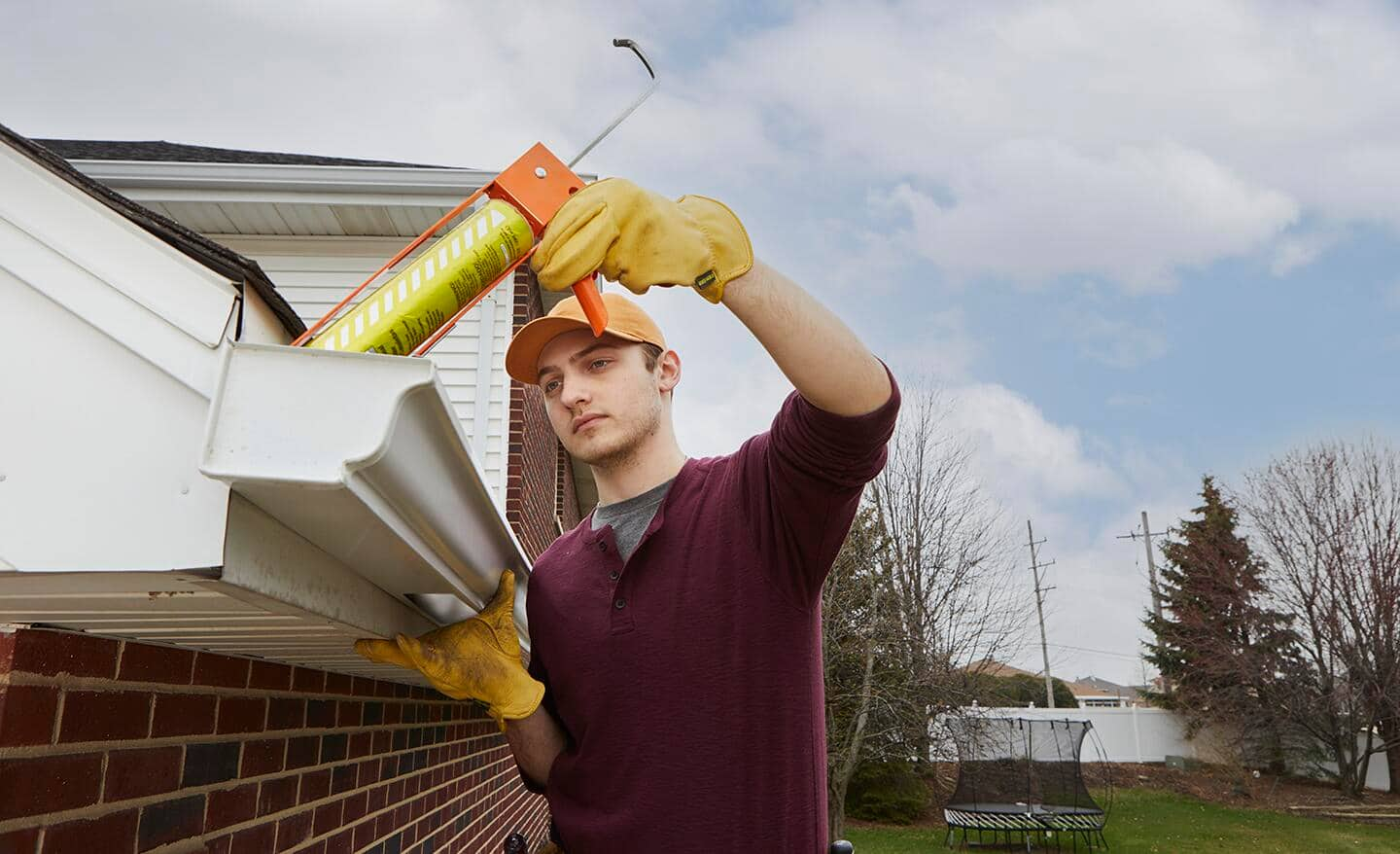
If you have small holes:
- Apply plastic roofing cement directly over the holes.
- Make sure to fill them completely.
If you have large holes:
- For holes larger than the size of a nail hole, use tin snips to cut a strip of flashing. Flashing is a waterproof tool that stops moisture buildup behind the gutter.
- Use the same material as the gutter. Make sure it is wide enough to fully cover the area with the hole.
- Apply the roofing cement.
- Bend the strip to fit and embed the flashing in the cement.
- Make sure the roofing cement covers all the gaps.
For all holes:
- Finish by feathering the roofing cement out on the surrounding area to flatten any steep edges. This will promote proper water flow.
Check the Downspout
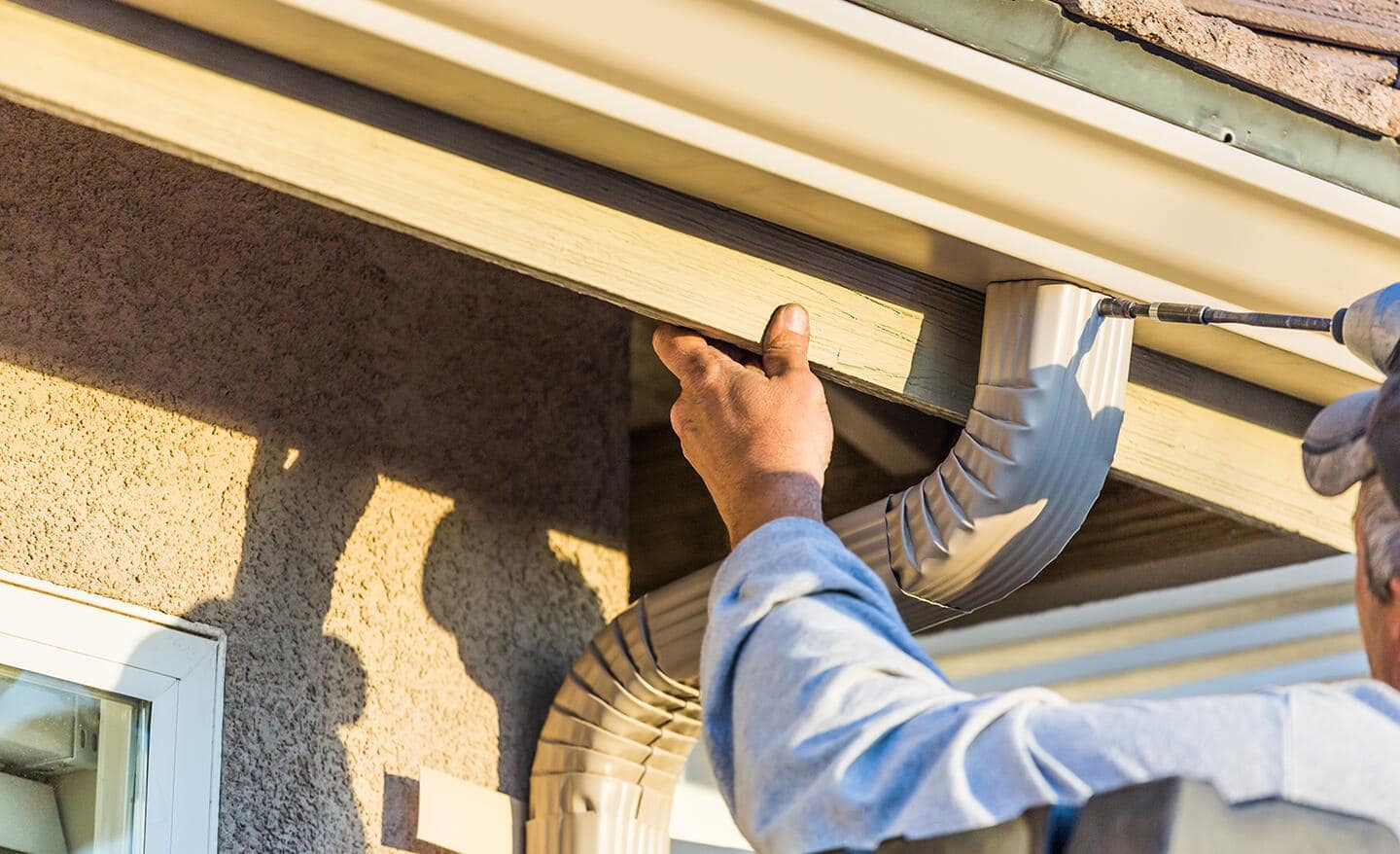
This is also a good time to check your gutter downspouts for damage and replace them as needed. Over time, gravity can cause joints to open up, or they can get jostled from below and come loose.
- Remove any screws or connecting hardware at the joint.
- Disassemble the leaking or worn portion of the downspout.
Tip: You may need to remove other gutter or downspout sections near the leaky joint first.
Clean the Downspout Joints and Replace the Gaskets
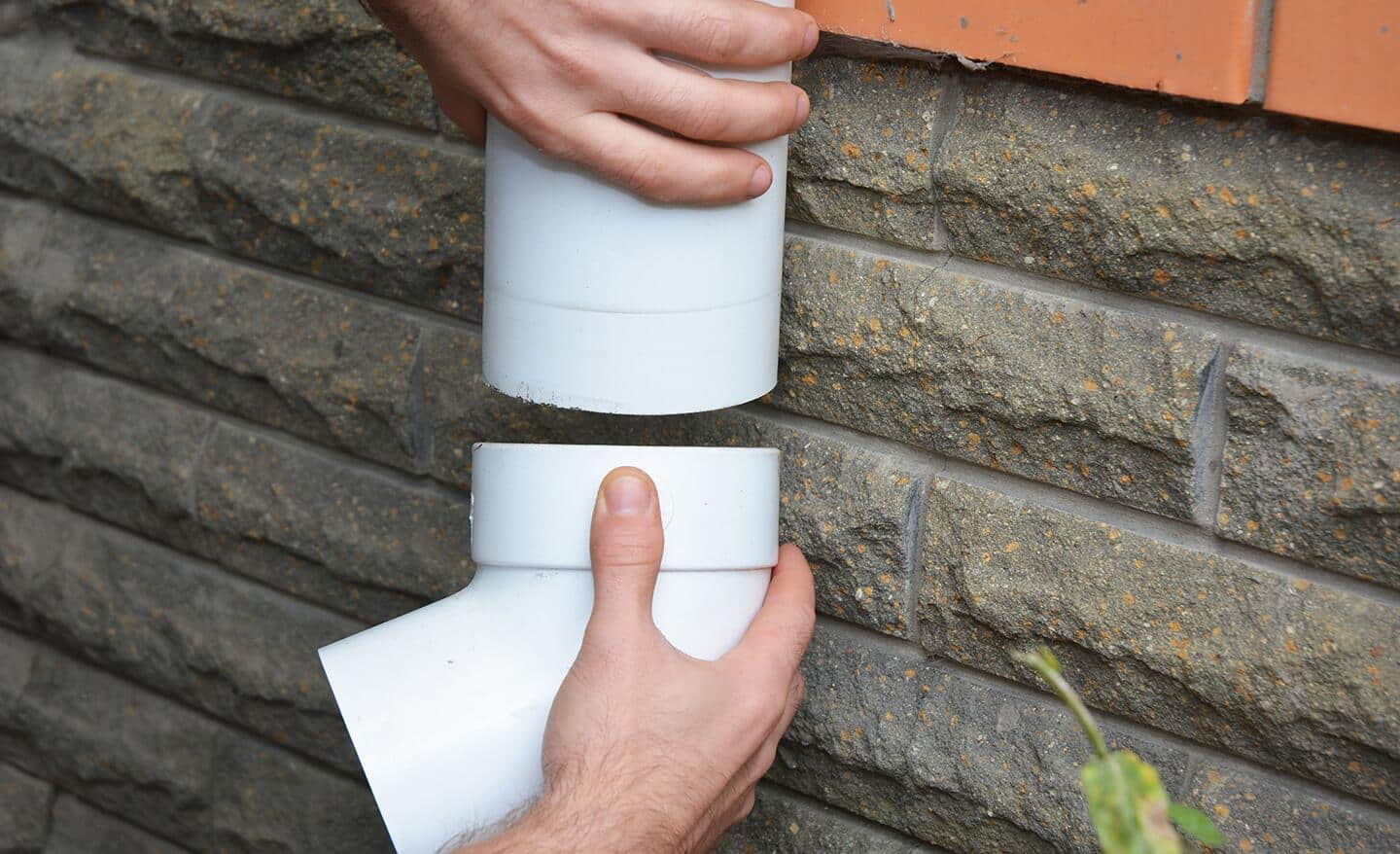
- If a leak occurs at the elbow/outlet leading from the gutter, there may be a clog in the downspout rather than a leak.
- Clean any caulk or adhesive from both parts of the joint using a stiff wire brush.
- Add any fasteners or connectors to complete the project.
Apply Silicone and Reassemble
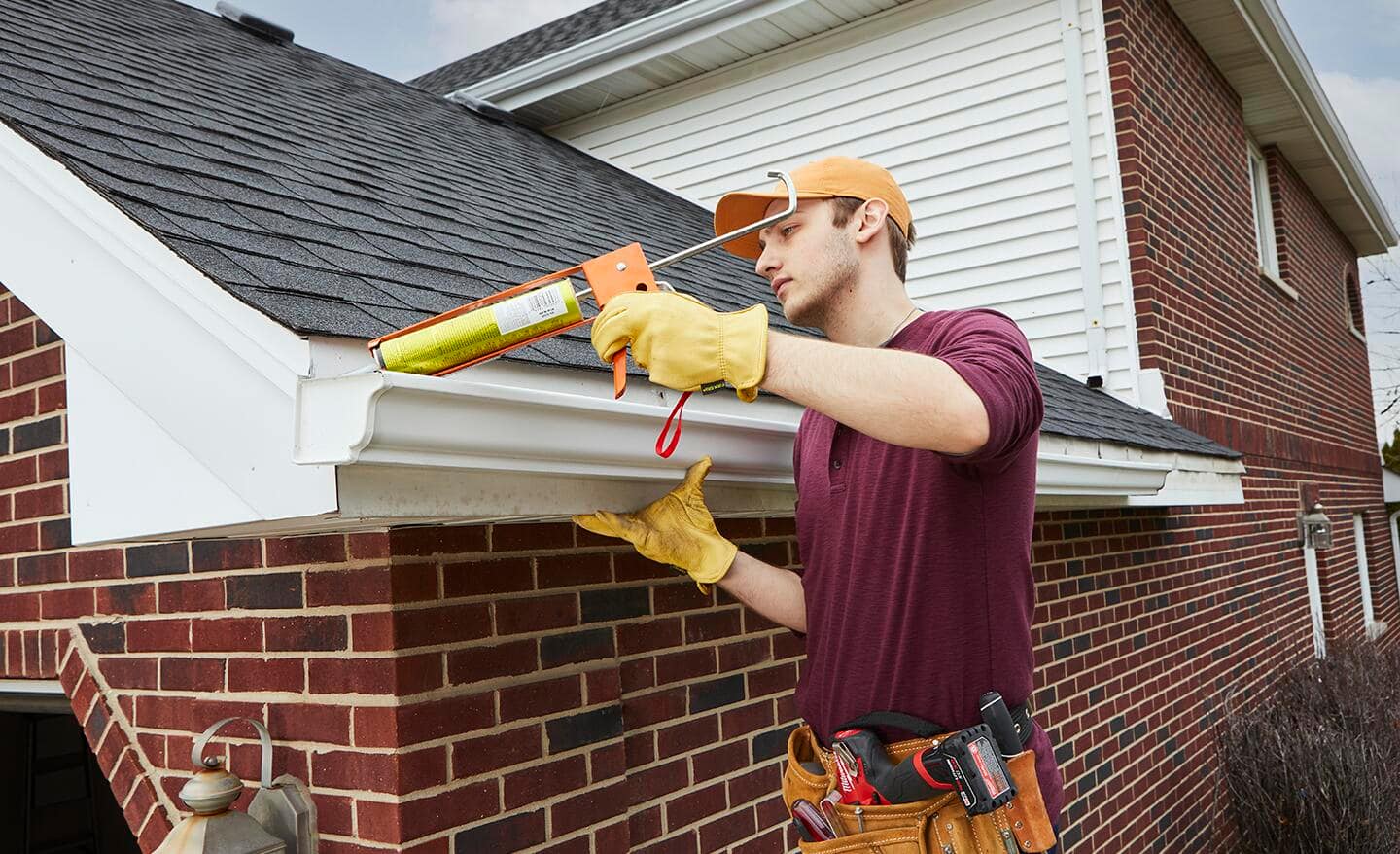
- The final step in how to fix gutters is to apply a bead of silicone caulk to one of the parts at the joint area.
- Then, reassemble the gutter system.
- Add any necessary fasteners or connectors.
Consider Additional Problems When Fixing Gutters
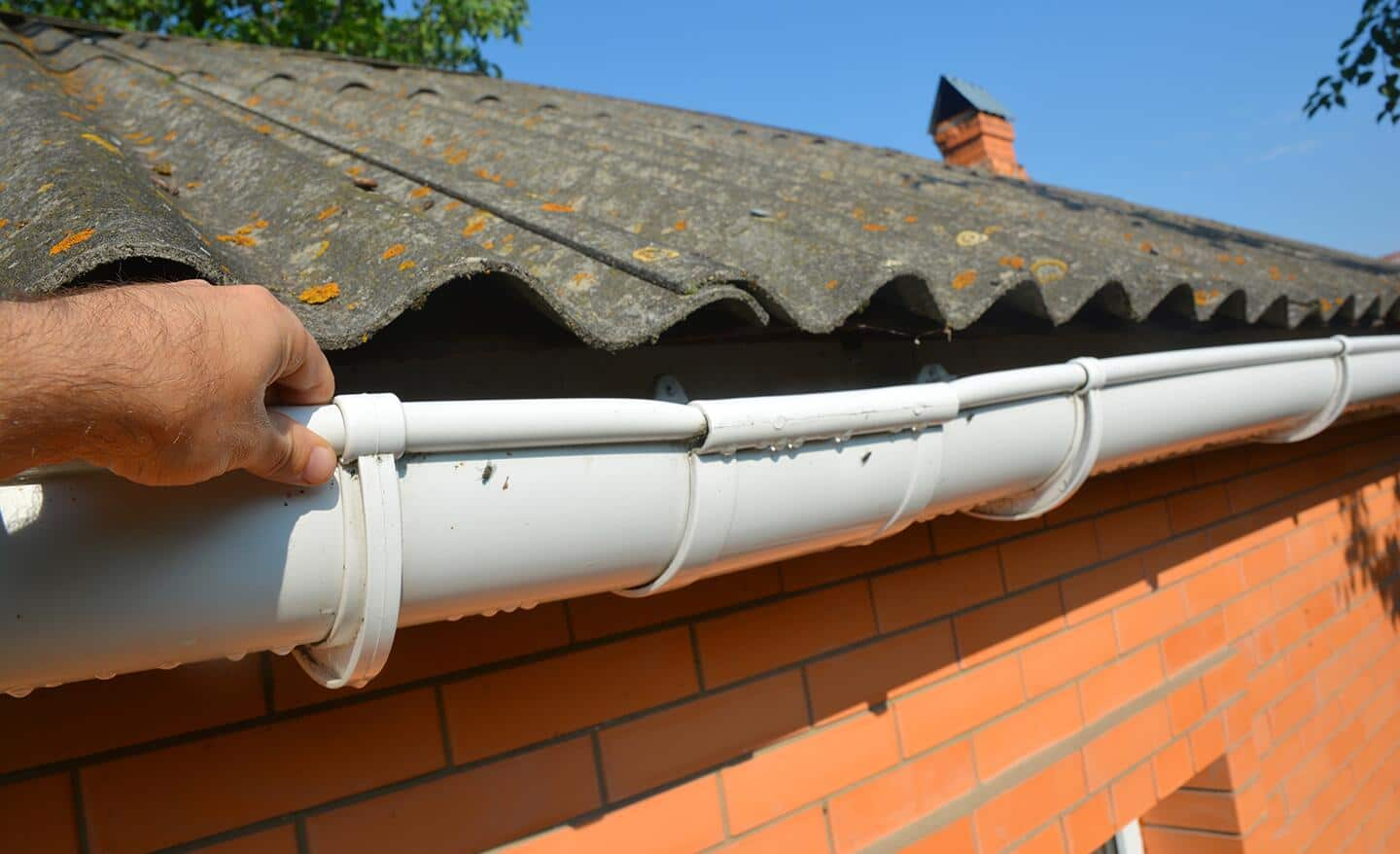
While repairing gutters, keep an eye out for additional gutter issues. If you notice that the gutter is sagging, it could cause water not to drain properly and overflow from the sagging area. It's a good idea to have a level or measuring tape available.
A properly installed gutter will drop about a quarter inch for every 10 feet of gutter to direct the water toward the downspout. If there are areas that sag, you may need to replace the hangers supporting the gutters.
Maintain Your Gutter System
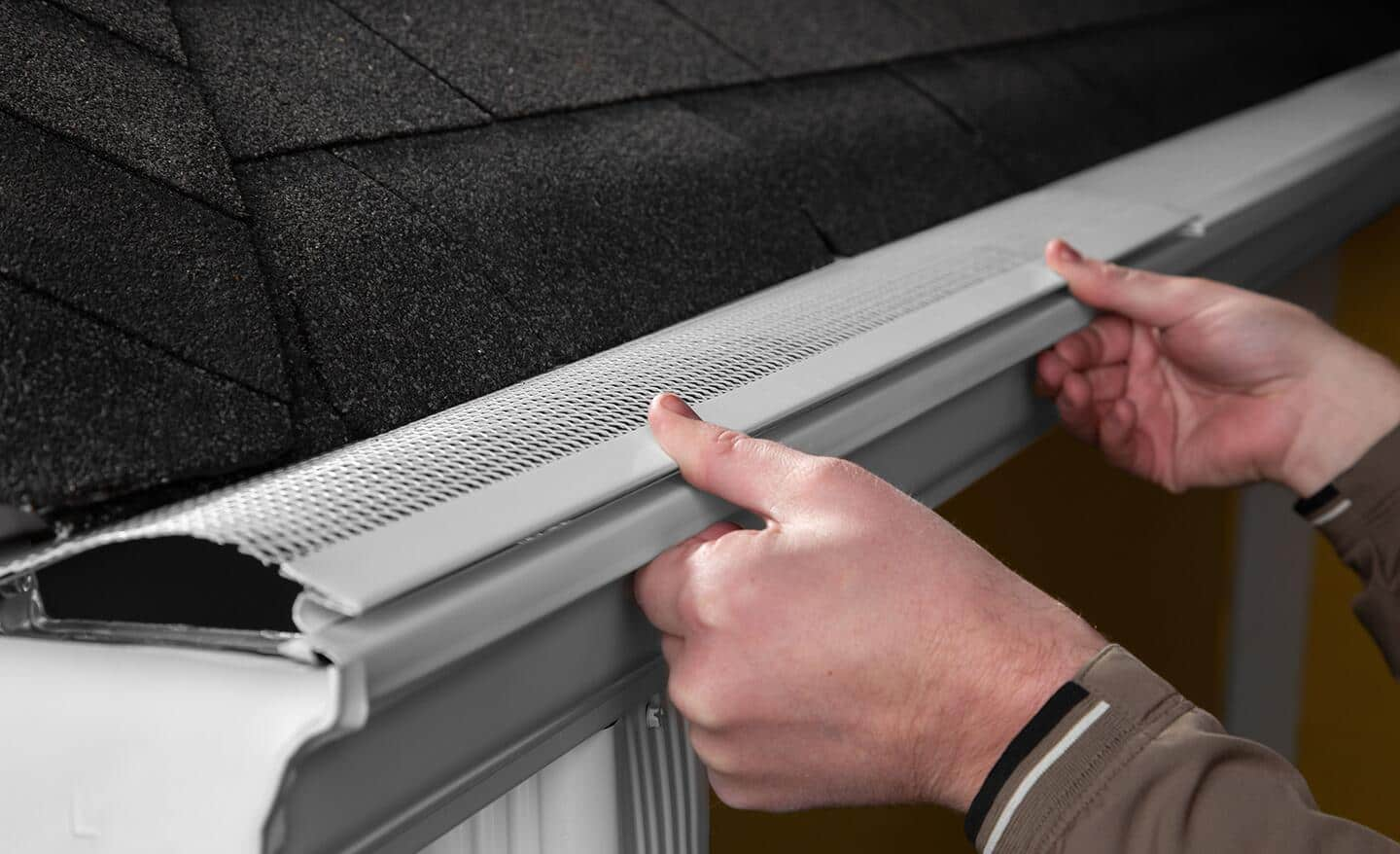
Now that you've learned how to fix gutters, it's time to learn how to maintain them. This will help you avoid problems in the future. Most importantly, make a habit of cleaning out your gutters routinely. This is especially important after the fall months when leaves have a tendency to accumulate in your gutter system.
While you're cleaning your gutters, inspect the entire gutter system so you can catch any potential problems early. Repairing gutters right away helps prevent more extensive damage. It's also a good idea to walk around the perimeter of your home regularly. Pay attention to each downspout and make sure there's nothing blocking the water's path away from your foundation. If the water isn't flowing away from your home, you may need to alter the landscaping at the base of your downspout to allow for flow away from the home.
Tip: Add gutter guards to your home to help prevent clogs all year long.
Learning how to repair gutters is just one way you can protect your home from damage. Use these instructions as a basic guideline when repairing gutters. Always take the proper safety precautions when tackling exterior home projects and make sure to wear the appropriate protective clothing and equipment. With a little regular maintenance, a gutter system should last you for up to 20 years if they are made of aluminum and up to 50 years if they are made of copper.
Ready to purchase the gutter parts and accessories you need? The Home Depot delivers online orders when and where you need them. Now that you know how to fix a leaky gutter, consider the next home project you'll tackle.























